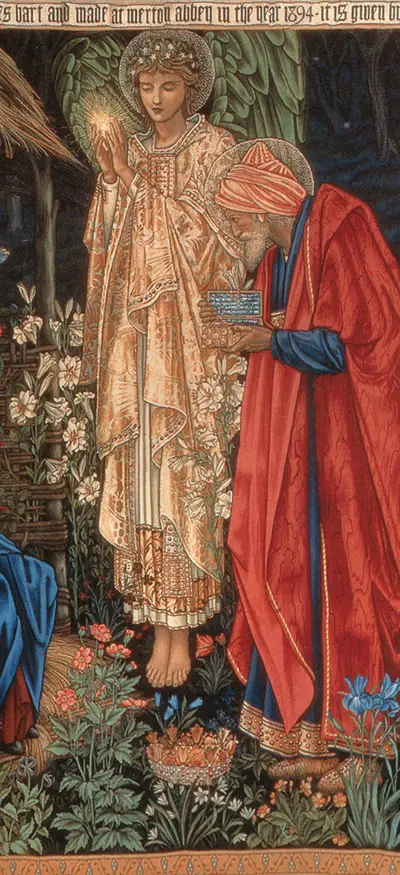 Buy Art Prints Now
Buy Art Prints Nowfrom Amazon
* As an Amazon Associate, and partner with Google Adsense and Ezoic, I earn from qualifying purchases.
The involvement of Edward-Burne Jones in the crafts of embroidery and tapestry is hardly surprising considering how his paintings and drawings would regularly feature flowered patterns, common throughout the work of Morris & Co.
The paintings of Burne-Jones were sometimes criticised for being too feminine, but this style is well suited to the delivery of tapestries. In the modern day, we are far more accepting of different styles of artistic expression and a touch of femininity from the likes of Klimt or Mucha is not met with the same derogatory reaction. The artist Burne-Jones was always hovering between fine art and craft art, meaning he was hard for many to categorise comfortably.
This artist would never be involved in the actual construction of the final piece, merely the initial design. Often he would deliver watercolour and bodycolour paintings as a guide to professional craftsmen who understood better the technicalities of this medium. Some of his designs would prove so popular that Morris & Co. would actually produce many tapestries of the same original work. Burne-Jones appreciated this art form as a way of producing huge pieces that could be reproduced right across the country. It also helped to strengthen the finances of the company of which he was so committed.
The photograph to the left is a cropped area of a larger tapestry, namely Adoration of the Magi. This topic is common throughout Renaissance art and is an integral theme of Christian teachings. That said, for it to appear in tapestry form is more unusual, particularly from a British artist in the 19th century. The title of this artwork was sometimes shortened to simply, The Adoration, and we have included it here because it was to be Morris & Co.'s most popular tapestry. A total of ten versions were woven, then sent to customers such as the Corporation of Manchester (the version from which this photograph was taken), Eton College Chapel, Museum für Kunst und Gewerbe Hamburg and also the Colman family who continue to run a British mustard empire.
Art for art's sake was promoted heavily through the Aesthetic Movement and Burne-Jones was an important part of this new artistic direction. They wanted to produce art that the public could enjoy immediately and without concern for subtle symbolist touches or moral narratives.




